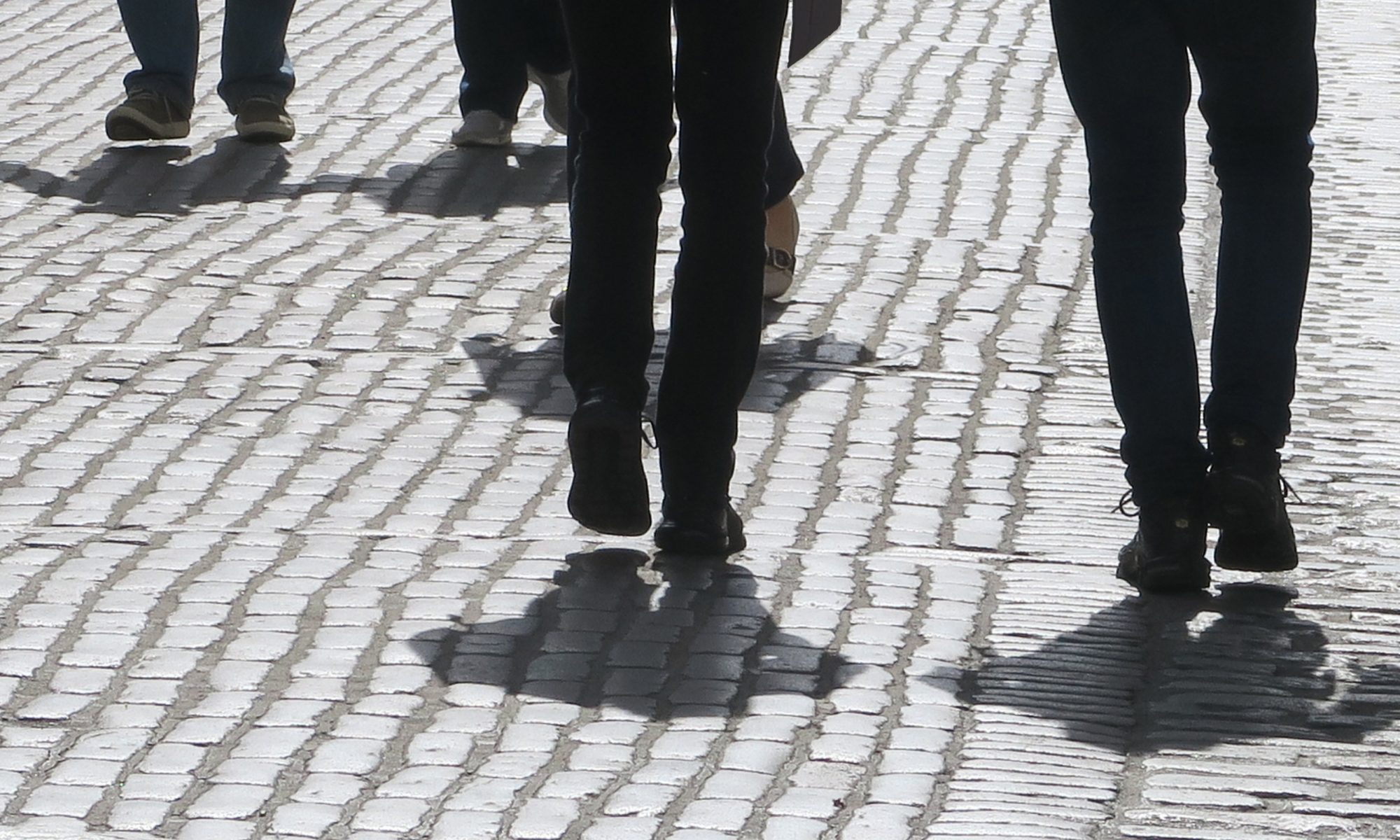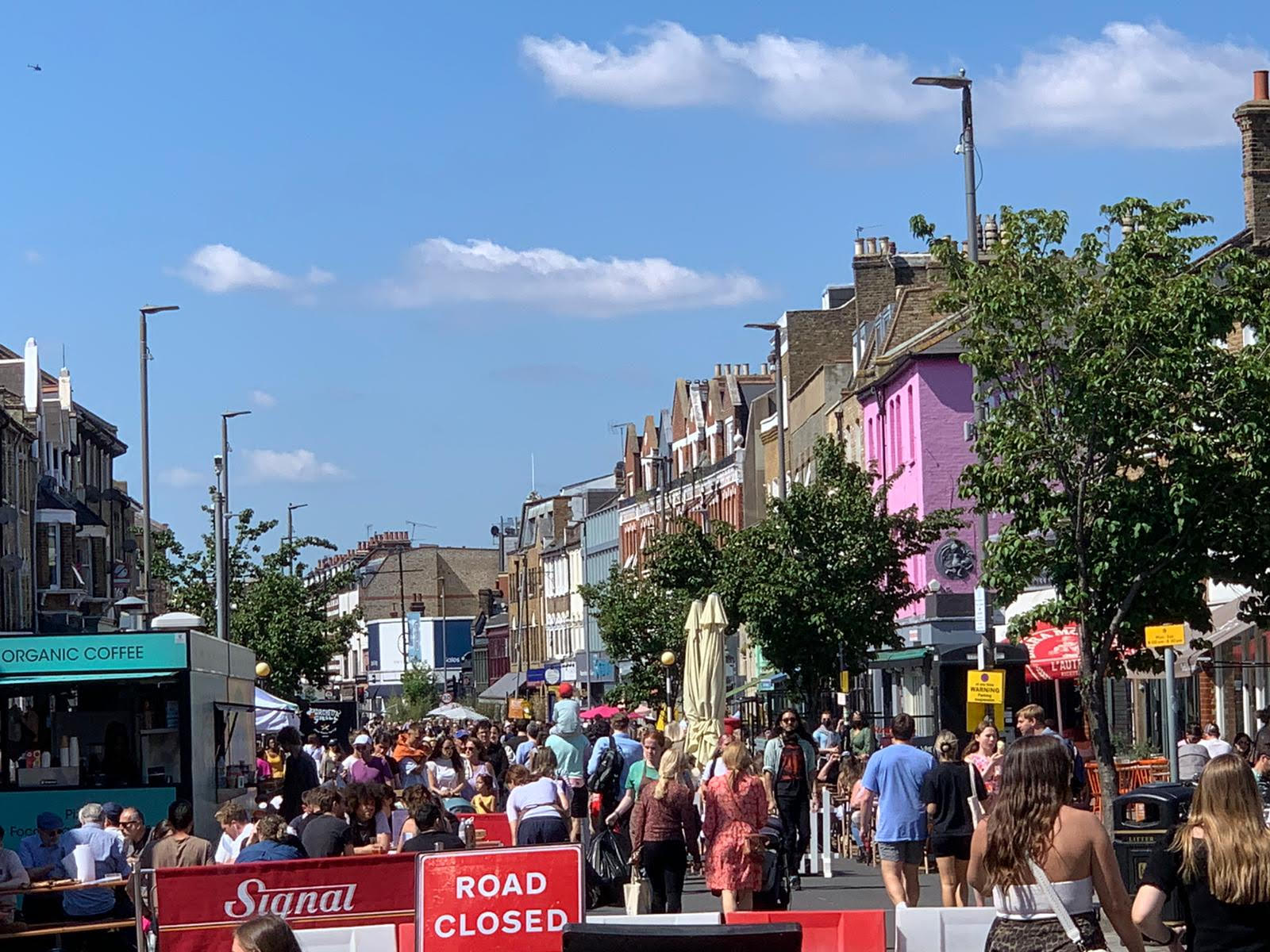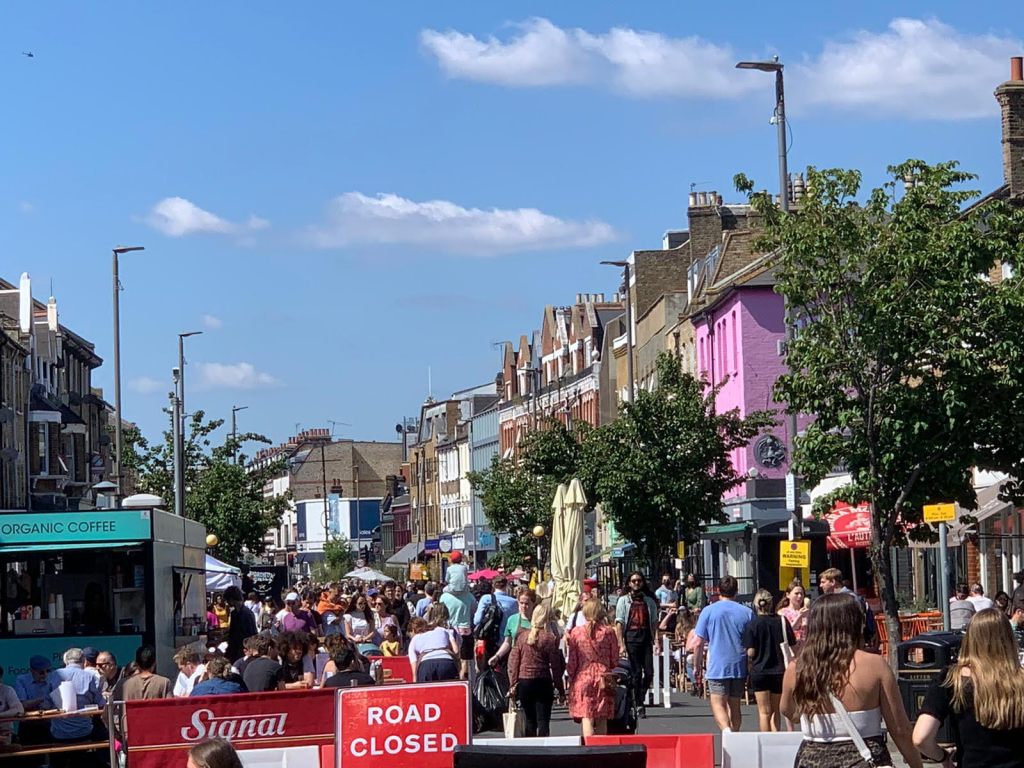
Download this blog as a pdf here
Here is something you may have seen, but never heard of – al fresco streets! And you won’t have heard of them because the term has only just been invented by some enterprising officers at Wandsworth Council. In fact, this Council may be in the forefront of a move to transform some London streets in wholly unexpected ways.
The basic idea is to turn suitable streets into places where people on foot really are top dog. Motor traffic is largely or completely excluded and all parking suspended. This happens either at weekends or every day. In summer, and perhaps all year round. The al fresco street takes off from the already hugely popular ‘streateries’ (the name given to what has been done in Soho) that have caught on all over the country with restaurants during the Covid epidemic[i] — the difference being a ‘whole street’ treatment (individual businesses do not have to apply for permission to spread across the road) and the exclusion of motor traffic.
It was the Covid pandemic that kicked off these ideas. Lockdown rules (a constantly changing kaleidoscope, of course) ordered almost all retail outlets, pubs, wine bars, restaurants, coffee shops etc to close. And when they could eventually open, social distancing initially said patrons must stay outside. In early summer last year, Wandsworth Council identified two streets with a concentration of such businesses, and introduced the al fresco experiment. One was Northcote Road in Battersea, SW11, already a very popular shopping and eating out street. The other was Old York Road in Central Wandsworth, SW18. And most recently, a third street, part of Bedford Hill in Balham, SW12 is trialling a similar, temporary makeover. All three, during their operational times, are closed to delivery lorries, cars and other motor vehicles. Businesses are allowed to spread out seating and tables across the pavement and on to much of the carriageway, with the strict requirement that a wide passageway is left along the carriageway for pedestrians, disabled people and their mobility vehicles, and cyclists. In Northcote Road this happens at weekends only; in Old York Road, every day. Local circumstances, flexibility, experimentation are the name of the game in terms of what physical measures, traffic orders etc are introduced. And throughout, it is important that Officers considered the needs of disabled people, including ease of access and installation of dropped kerbs where these are missing.
Transport for London (TfL) had to re-reroute buses, now for the second year running. The Met was asked to review, and agreed, that adequate measures had been put in place to deter a terrorist attack. Businesses were brought on board. The pubs and wine-bars on Northcote Road agreed a community toilet scheme where everyone could use their facilities even if not drinking or eating at the particular establishment. Money was found for planters, water-filled barriers, even concrete caissons at certain locations. Traffic orders were drawn up to minimise inconvenience to residents on side roads needing to use their cars. None of this was easy.
We are now in the 2nd year of this experiment. It has proved immensely popular, not only with local people, but other Londoners from further afield. All day Saturday and Sunday, Northcote Road is awash with throngs of people, including many families. Eating and drinking establishments are obviously doing very well. Retail shopkeepers, particularly clothes shops on Northcote Road, had been very hesitant originally, but most are now seeing upturns in their turnover. And in the few weeks the Bedford Hill experiment has been going, local businesses and residents living on that stretch of the road are welcoming it with enthusiasm. One group there however, called One Wandsworth that was started last year in reaction to Low Traffic Neighbourhoods in Tooting, has filled the airwaves with a host of objections, often virulently worded, allegedly in the name of residents – to the removal of some parking.
There are examples of these al fresco streets elsewhere. A short stretch of Kensington Park Road in Notting Hill, W11. And, most delightful of all, Church Street in Twickenham which lies a stone’s throw from the Thames opposite Eel Pie Island.
- Have you got any al fresco street in your part of London with a similar experiment in hand? And if so, do let us know (if possible sending a pic too), as well as what you think of it, and how it might be improved.
- And if you haven’t, can you suggest a possible candidate street in your borough where your Council could try out the idea next summer? Do talk to your Ward Councillors and/or appropriate Council Officers and suggest they look into the idea.
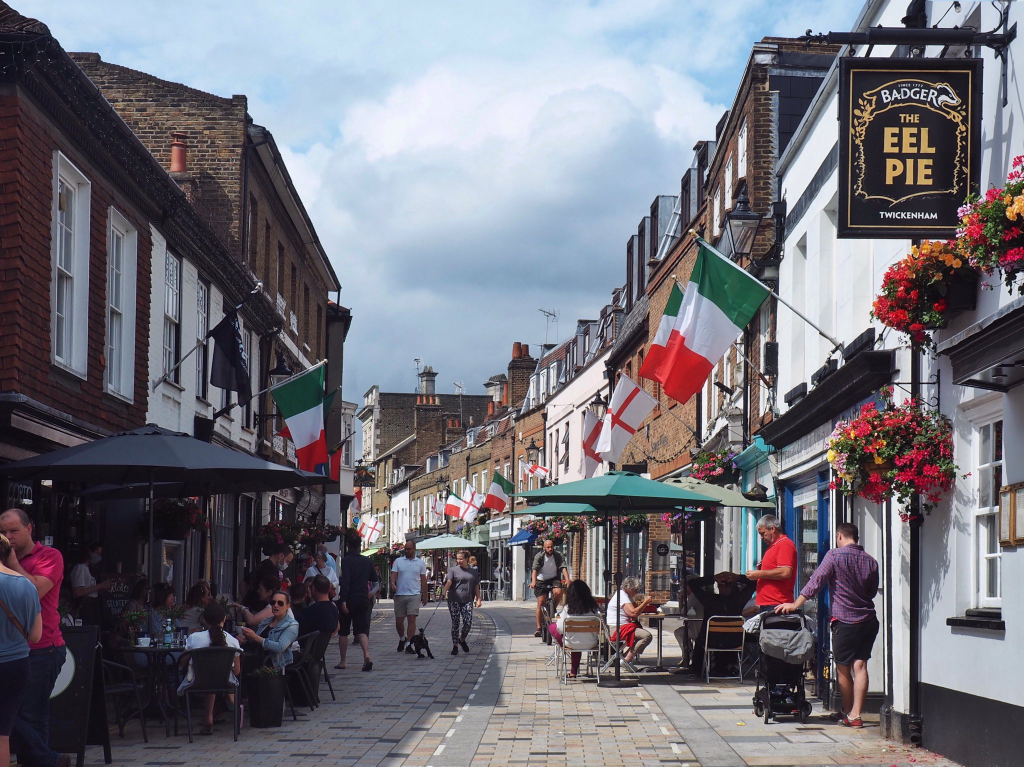
And would you like a guided tour of one of Wandsworth’s al fresco streets? WANDSWORTH LIVING STREETS would be happy to show you around. And talk through the difficulties that can arise and how they can be overcome. We can also put your Borough Officers in touch with the relevant Officers in Wandsworth (and the Councillor responsible for the project) if they would like to learn more. Contact Robert Molteno, Secretary, Wandsworth Living Streets at Robert.Molteno@gmail.com
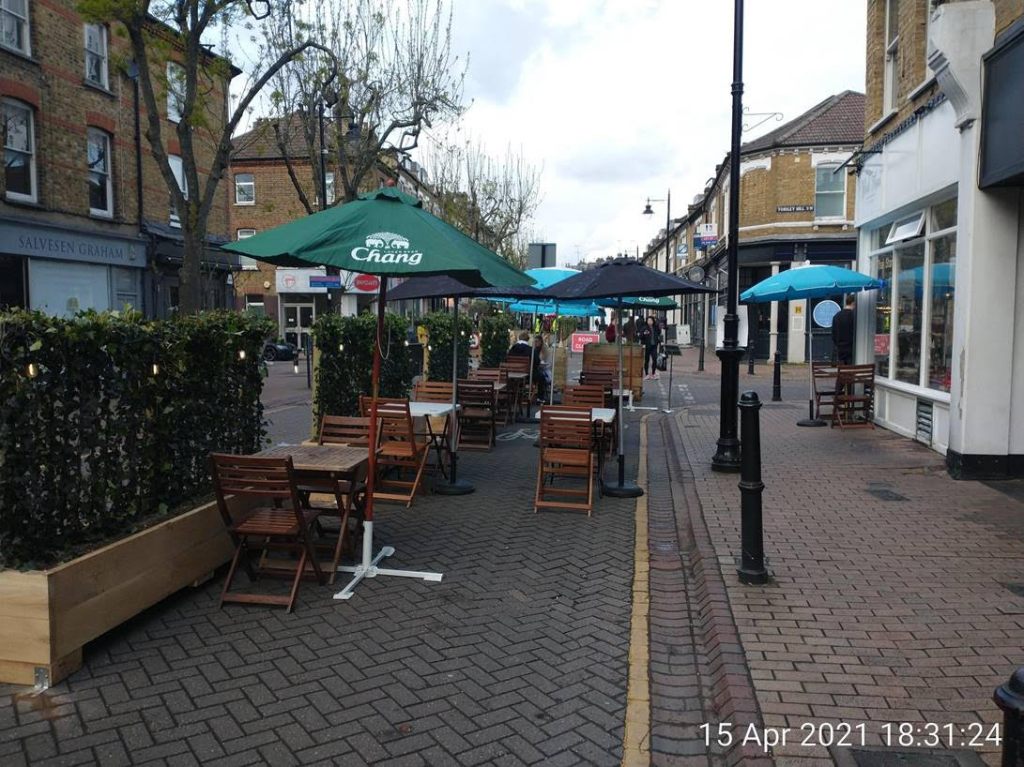
[i] National Restaurant Association survey, March 2021. https://restaurant.org/articles/news/consumers-want-to-keep-streeteries-in-place
